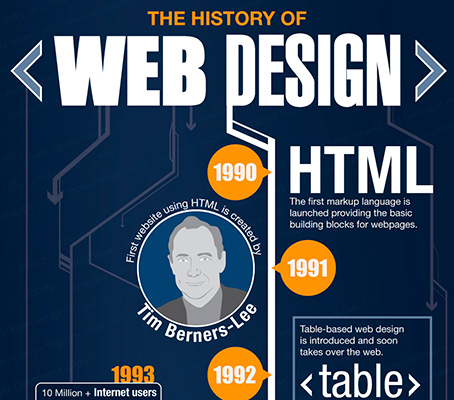The Advancement Of Website Design: From Past To Present
The Advancement Of Website Design: From Past To Present
Blog Article
Content By-Tobiasen Molina
In the past, internet sites were straightforward and focused on details. Navigating was straight, and style was for desktops. Now, individual experience is essential. Data overviews styles for simple navigating. Receptive formats suit various devices. Today, dark mode decreases stress, and minimal menus improve navigating. Interactive features involve customers, and bold visuals attract attention. AI combination enhances interaction. See just how layout has progressed to boost your on-line trip.
Early Days of Web Design
In the early days of web design, simplicity preponderated. Internet sites were basic, with restricted shades, typefaces, and layouts. The emphasis got on offering information instead of fancy visuals. Individuals accessed the net with slow-moving dial-up links, so rate and functionality were key.
Navigation menus were straightforward, normally located at the top or side of the page. Web sites were created for desktop, as mobile browsing had not been yet prevalent. Material was king, and developers focused on very easy readability over intricate style elements.
HTML was the main coding language used, and developers had to function within its constraints. Animations and interactive features were minimal contrasted to today's requirements. Websites were static, with little dynamic web content or customized individual experiences.
Increase of User-Focused Design
With the development of site style, a shift in the direction of user-focused layout principles has actually come to be progressively popular. Today, creating websites that prioritize user experience is essential for involving site visitors and accomplishing company goals. User-focused design includes understanding the demands, choices, and habits of your target audience to customize the site's layout, web content, and features as necessary.
https://www.accountingtoday.com/list/4-b2b-content-marketing-strategies-that-get-results-for-firms carry out complete research study, such as user studies and use testing, to collect understandings and feedback directly from customers. This data-driven method aids in producing intuitive navigation, clear calls-to-action, and visually appealing interfaces that resonate with site visitors. By positioning the individual at the facility of the layout process, websites can supply an extra individualized and pleasurable experience.
Receptive layout has actually likewise become an essential aspect of user-focused layout, making certain that sites are enhanced for various devices and screen sizes. This flexibility enhances ease of access and use, dealing with the diverse methods users interact with internet sites today. Fundamentally, the increase of user-focused layout symbolizes a change in the direction of producing digital experiences that prioritize the requirements and assumptions of completion individual.
Modern Trends in Website Design
Discover the most recent fads forming website design today. One prominent pattern is dark setting style, providing a sleek and contemporary look while reducing eye pressure in low-light settings. One more essential pattern is minimal navigating, simplifying food selections and boosting customer experience by focusing on essential elements. Including micro-interactions, such as animated switches or scrolling impacts, can develop a more engaging and interactive internet site. Responsive style continues to be vital, guaranteeing seamless customer experiences throughout numerous gadgets. Furthermore, making use of vibrant typography and asymmetrical formats can include visual rate of interest and accentuate particular content.
Incorporating AI innovation, like chatbots for customer assistance or customized recommendations, enhances individual involvement and streamlines processes. https://elliottoieys.blogpayz.com/26637527/producing-an-efficient-call-to-action-top-tips-for-internet-site-style has also come to be a significant pattern, with developers focusing on comprehensive style techniques to satisfy varied individual requirements. Accepting sustainability by maximizing web site efficiency for rate and efficiency is an additional emerging pattern in web design. Collaborating with customer feedback and data analytics to repeat and improve layout continuously is important for remaining appropriate in the ever-evolving digital landscape. By welcoming these modern fads, you can develop an aesthetically enticing, straightforward internet site that reverberates with your target market.
Conclusion
As you reflect on the development of website style from the very early days to currently, you can see how user-focused layout has actually become the driving force behind contemporary fads.
Accept the trip of adjustment and adjustment in website design, always keeping the customer experience at the center.
Keep existing with the current trends and technologies, and never ever quit progressing your method to produce aesthetically spectacular and straightforward sites.
Progress, adapt, and produce - the future of website design is in your hands.
